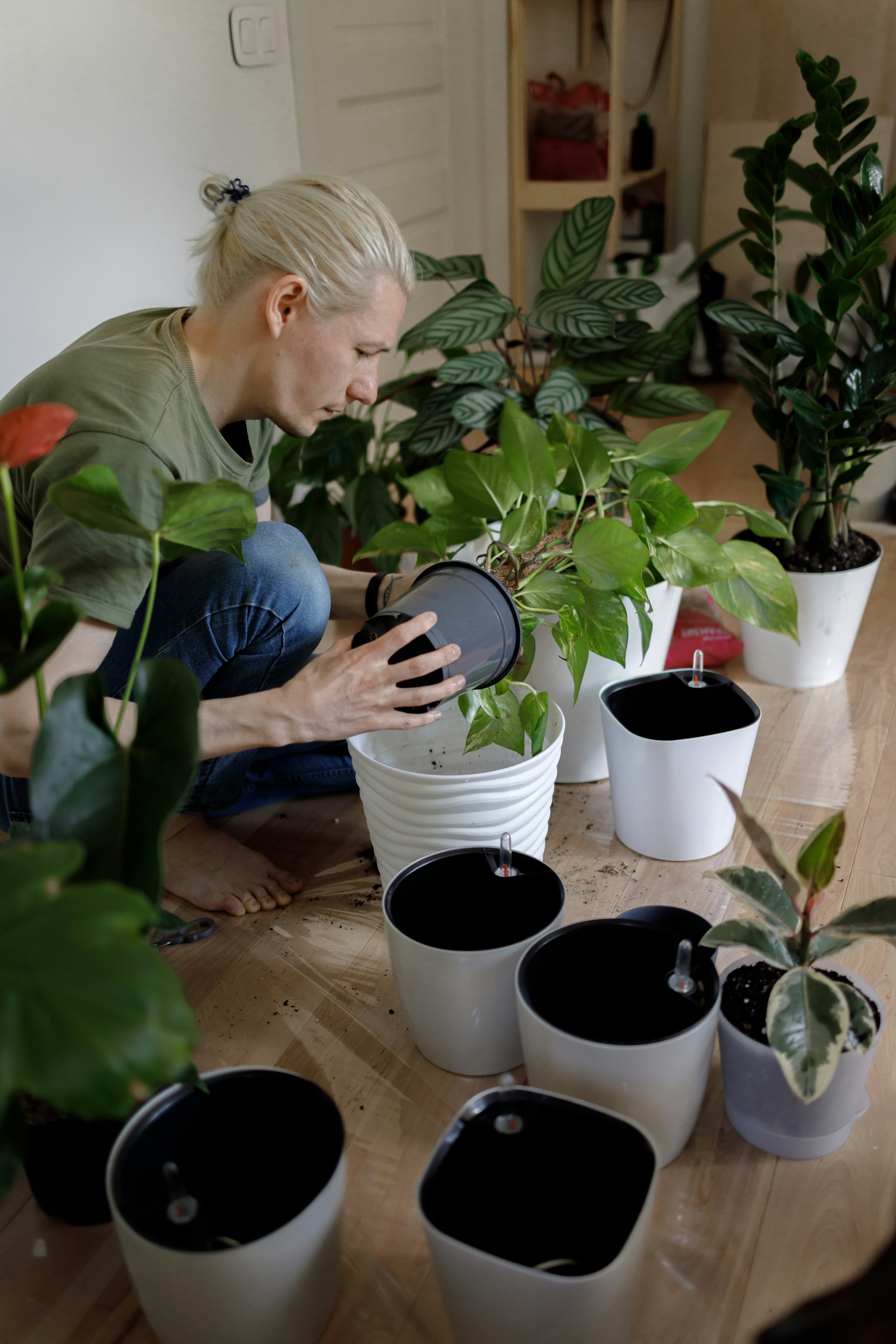How to Manage Overwatered Indoor Plants
Overwatering is one of the most common issues faced by indoor plant enthusiasts. It can lead to root rot, a weakened structure, and eventually, the death of the plant. However, with the right approach, you can revive your overwatered plants and prevent future occurrences. Here’s a detailed guide on how to manage overwatered indoor plants effectively.
Signs of Overwatering
Before you can fix the problem, you need to be sure that overwatering is indeed the issue. Here are some signs to look out for:
- Soggy Soil: Consistently wet soil is a clear sign of overwatering.
- Yellowing Leaves: If the leaves are turning yellow and feel soft or mushy, it’s often due to too much water.
- Wilting: Plants that wilt despite wet soil are likely overwatered.
- Mold or Algae on the Soil Surface: This indicates excessive moisture.
- Root Rot: Roots that are brown, black, and mushy instead of white and firm.
Steps to Revive Overwatered Plants
1. Stop Watering Immediately
Give your plant a break from watering to allow the soil to start drying out.
2. Remove the Plant from Its Pot
Carefully take the plant out of its pot to inspect the root condition. This will also help the soil dry out more quickly.
3. Trim Damaged Roots
Using sterilized scissors or shears, trim away any roots that are brown or mushy. Focus on preserving healthy, white roots.
4. Repot with Fresh Soil
Choose a pot with good drainage and fill it with fresh, well-draining potting mix. Avoid using soil from the old pot as it might be contaminated or compacted.
5. Adjust Your Watering Schedule
Once repotted, water the plant lightly. Going forward, adjust your watering schedule based on the plant’s specific needs and the environmental conditions.
Preventing Overwatering
1. Understand Your Plant’s Needs
Each plant species has unique watering requirements. Research your plant’s preferences for best results.
2. Use the Right Soil Mix
Ensure your potting mix is appropriate for your plant type. Generally, a mix that includes perlite or sand improves drainage.
3. Check the Drainage
Always use pots with drainage holes. If a decorative pot lacks holes, use it as a cover rather than the primary pot.
4. Monitor Soil Moisture
Before watering, check the soil moisture. You can use a finger test (stick your finger about an inch into the soil) or a soil moisture meter.
5. Adjust with Seasons
Plants often need less water in the winter months. Adjust your watering schedule according to the season and your indoor environment.
Conclusion
Managing overwatered indoor plants requires prompt action and adjustments to your care routine. By following these steps, you can not only revive your plants but also enhance their growth and vitality. Remember, understanding your plant’s specific needs is key to successful indoor gardening.
For more personalized advice on plant care or any other inquiries, feel free to chat with Mavyn GPT or connect with one of our human experts at Mavyn. We’re here to help you with tailored solutions for all your questions!
